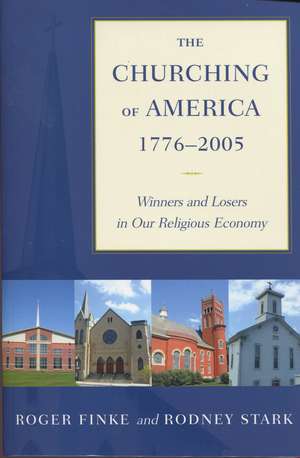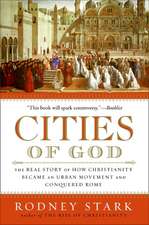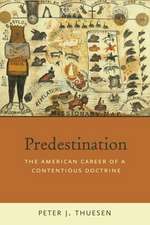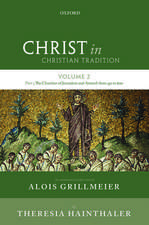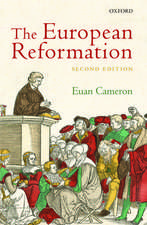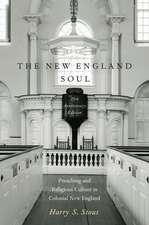The Churching of America, 1776-2005: Winners and Losers in Our Religious Economy
Autor Roger Finke, Rodney Starken Limba Engleză Paperback – 3 mar 2005
Although many Americans assume that religious participation has declined in America, Finke and Stark present a different picture. In 1776, fewer than 1 in 5 Americans were active in church affairs. Today, church membership includes about 6 out of 10 people.
But, as Finke and Stark show, not all denominations benefited. They explain how and why the early nineteenth-century churches began their descent, while two newcomer sects, the Baptists and the Methodists, gained ground. They also analyze why the Methodists then began a long, downward slide, why the Baptists continued to succeed, how the Catholic Church met the competition of ardent Protestant missionaries, and why the Catholic commitment has declined since Vatican II. The authors also explain why ecumenical movements always fail
In short, Americans are not abandoning religion; they have been moving away from established denominations. A "church-sect process" is always under way, Finke and Stark argue, as successful churches lose their organizational vigor and are replaced by less worldly groups.
Some observers assert that the rise in churching rates indicates increased participation, not increased belief. Finke and Stark challenge this as well. They find that those groups that have gained the greatest numbers have demanded that their followers accept traditional doctrines and otherworldliness. They argue that religious organizations can thrive only when they comfort souls and demand sacrifice. When theology becomes too logical, or too secular, it loses people.
But, as Finke and Stark show, not all denominations benefited. They explain how and why the early nineteenth-century churches began their descent, while two newcomer sects, the Baptists and the Methodists, gained ground. They also analyze why the Methodists then began a long, downward slide, why the Baptists continued to succeed, how the Catholic Church met the competition of ardent Protestant missionaries, and why the Catholic commitment has declined since Vatican II. The authors also explain why ecumenical movements always fail
In short, Americans are not abandoning religion; they have been moving away from established denominations. A "church-sect process" is always under way, Finke and Stark argue, as successful churches lose their organizational vigor and are replaced by less worldly groups.
Some observers assert that the rise in churching rates indicates increased participation, not increased belief. Finke and Stark challenge this as well. They find that those groups that have gained the greatest numbers have demanded that their followers accept traditional doctrines and otherworldliness. They argue that religious organizations can thrive only when they comfort souls and demand sacrifice. When theology becomes too logical, or too secular, it loses people.
Preț: 342.11 lei
Nou
Puncte Express: 513
Preț estimativ în valută:
65.47€ • 67.83$ • 54.64£
65.47€ • 67.83$ • 54.64£
Carte tipărită la comandă
Livrare economică 22 martie-05 aprilie
Preluare comenzi: 021 569.72.76
Specificații
ISBN-13: 9780813535531
ISBN-10: 0813535530
Pagini: 368
Dimensiuni: 152 x 229 x 23 mm
Greutate: 0.51 kg
Ediția:Revised and Expanded
Editura: Rutgers University Press
Colecția Rutgers University Press
ISBN-10: 0813535530
Pagini: 368
Dimensiuni: 152 x 229 x 23 mm
Greutate: 0.51 kg
Ediția:Revised and Expanded
Editura: Rutgers University Press
Colecția Rutgers University Press
Cuprins
List of Illustrations
List of Figures
List of Tables
Preface to the Second Edition
1. A New Approach to American Religious History
2. The Colonial Era Revisited
3. The Upstart Sects Win America, 1776-1850
4. The Coming of the Catholics, 1850-1926
5. Methodists Transformed, Baptists Triumphant
6. Why Unification Efforts Fail
7. Why "Mainline" Denominations Decline
Appendix: Profile Tables, 1776 and 1850
Notes
Reference List
Index
List of Figures
List of Tables
Preface to the Second Edition
1. A New Approach to American Religious History
2. The Colonial Era Revisited
3. The Upstart Sects Win America, 1776-1850
4. The Coming of the Catholics, 1850-1926
5. Methodists Transformed, Baptists Triumphant
6. Why Unification Efforts Fail
7. Why "Mainline" Denominations Decline
Appendix: Profile Tables, 1776 and 1850
Notes
Reference List
Index
Descriere
In this provocative book, Roger Finke and Rodney Stark challenge popular perceptions about American religion. They view the religious environment as a free market economy, where churches compete for souls. The story they tell is one of gains for upstart sects and losses for mainline denominations.
